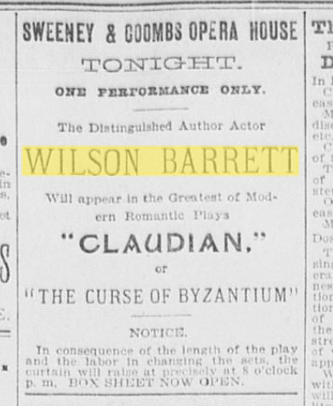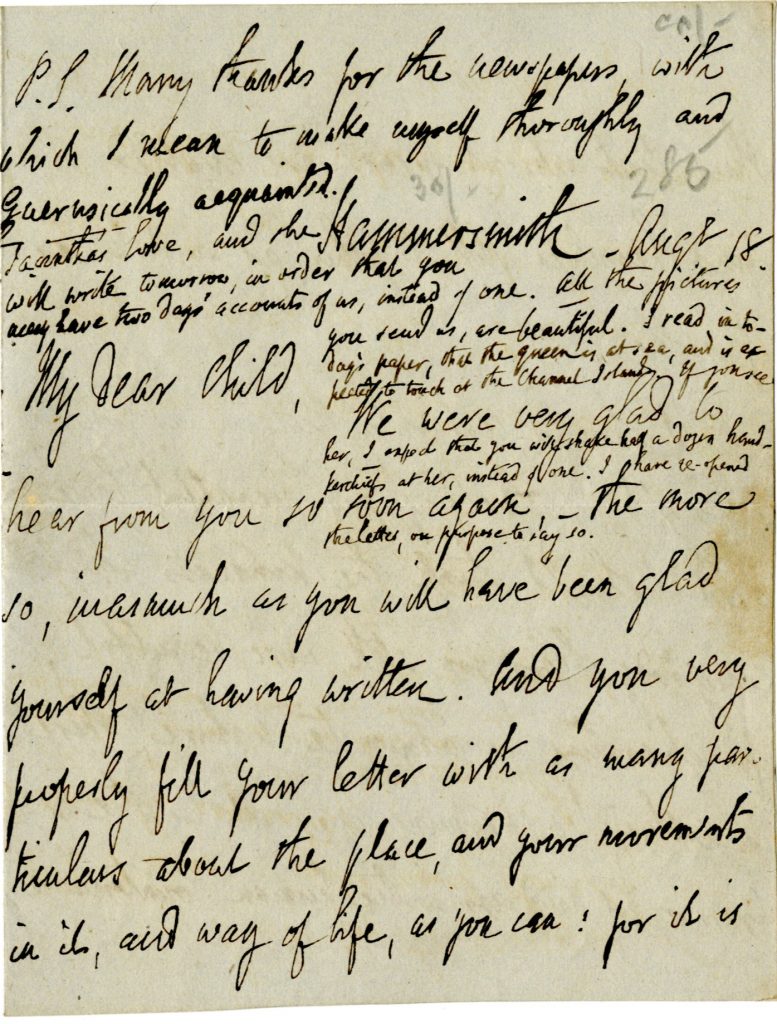by Melinda Creech
Graduate Assistant, Armstrong Browning Library
The Oceanic Steam Navigation Company, more commonly known as the White Star Line, was a prominent British shipping company. Founded in 1845, The White Star Line, operated a fleet of clipper ships that sailed between Britain, Australia, and America. The ill-fated Titanic was perhaps their most famous ship. The Armstrong Browning Library has a few connections to the Titanic. One connection relates to a set of postcards that disappeared with the Titanic and another relates to the author of the hymn, “Nearer, My God, to Thee,” the song that was purportedly playing as the Titanic sank. The Armstrong Browning Library’s collection includes a letter with the White Star logo in its heading and several letters written on board ships or while individuals were preparing to board ships. The letters, written between 1841 and 1912, are lines from people who were passengers on SS (Steamer Ships), RMS (Royal Mail Steamers), or HMS (Her Majesty’s Ship). It is interesting to note that one of the first purposes of steamers crossing the Atlantic was to deliver the mail. These lines, written from steamer ships, may shed some light on the adventure and danger presented by steamer travel in the late nineteenth century.

Wilson Barrett, British actor, theater manager, and playwright, 1883. A photograph from “The Theatre”, A Monthly Review, Volume I, January to June, 1883, David Bogue, London, 1883.
Wilson Barrett (1846-1904) was an English manager, playwright, and actor. In 1893 he packed up his touring company and came to the United States, landing at New York. Newspaper reports the company performing, interestingly enough, in New Orleans, Houston, and Galveston.
In the following letter, Barrett regretted that he could not have brought his play to London, but the White Star Line required his scenery by the 6th of November.
I should have come to London with Virginius but the White Star Steamship C’y will not take my scenery after the morning of the 6th – & as I do not finish in Liverpool until the 7th – it became impossible.
Wilson and his troupe made their trip to the United States on the White Star Line’s SS Teutonic.
During the first eighteen years of service from 1889 to 1907, the Teutonic sailed on the route from Liverpool to New York City, making an average of one sailing per month. In October, 1913, the ship narrowly avoided the same fate as the Titanic when, at 172 miles east of Belle Isle off the Newfoundland coast, she ran so close to an iceberg that she avoided collision only by reversing her engines and putting the helm hard aport. According to the October 29, 1913 issue of the Chicago Tribune,
…the liner passed within twenty feet of the iceberg. The fog was so thick that even at that small distance the berg could scarcely be distinguished. It was so close that there was danger that the propeller of the ship would strike it as the vessel went around. The passengers were not aware of their peril until it had been averted. They signed a testimonial to the captain and his officers expressing their gratitude and admiration for the care and skill displayed by them.











